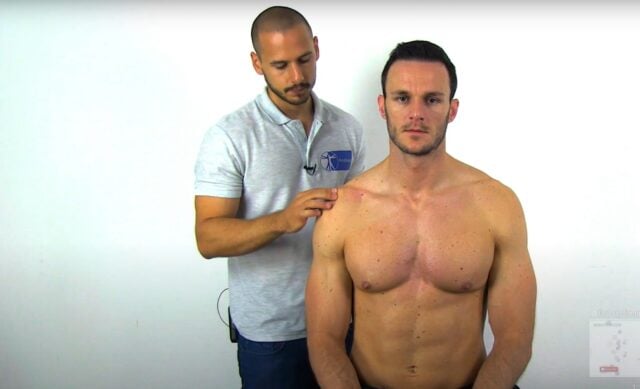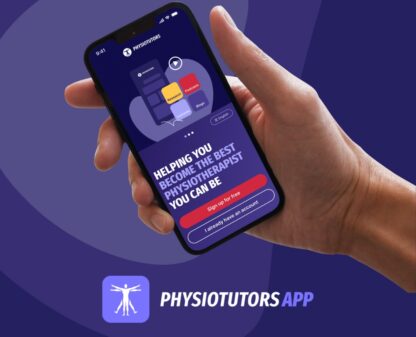AC Joint Pain

Introduction & Epidemiology
- The clavicle plays a crucial role in supporting and mobilizing the upper extremity, connecting it to the trunk and protecting subclavian vessels and the brachial plexus.
- Intra-articular disk between the clavicle and acromion helps correct bony incongruities but can degenerate over time.
- Injuries and arthritis are common causes of AC joint (ACJ) pain, with arthritis often resulting from constant stress on the joint, particularly in those who perform repeated overhead lifting activities.
Diagnosis & Classification
- Important to rule out clavicular fractures or severe AC joint separation during screening.
- AC joint separations graded based on the Rockwood classification (I-VI), with grades I-III managed conservatively and grades IV-VI managed surgically.
Clinical Picture
- AC arthritis presents with progressively worsening shoulder pain, exacerbated by minor trauma or strenuous activity.
- Pain typically located anteriorly over the shoulder or referred to the shoulder and upper arm, worsened by overhead activities, weight lifting, and cross-body movements.
- Night pain, popping, clicking, grinding, and catching sensation with shoulder movement are common; careful history of trauma or injuries important for diagnosis.
Examination
- Painful arc from 170°-180° of flexion/abduction
- Orthopedic tests: Paxino sign, AC Shear Test, AC Resisted Extension Test, AC Joint Line Tenderness
- Higher validity to combine tests in cluster of which 2 are described in the literature
Treatment
- Nonoperative management is first-line, including rest, activity modification, NSAIDs, corticosteroid injections, and physical therapy.
- Activity modification essential to prevent symptom re-aggravation; physical therapy aims to improve strength and range of motion.
- No clear evidence on effectiveness of steroid injections; surgery considered for severe ongoing symptoms unresponsive to conservative therapy, with arthroscopic surgery becoming more common.
References
Balcik, B. J., Monseau, A. J., & Krantz, W. (2013). Evaluation and treatment of sternoclavicular, clavicular, and acromioclavicular injuries. Primary Care: Clinics in Office Practice, 40(4), 911-923.
Buss, D. D., & Watts, J. D. (2003). Acromioclavicular injuries in the throwing athlete. Clinics in sports medicine, 22(2), 327-341.
Cadogan, A., McNair, P., Laslett, M., & Hing, W. (2013). Shoulder pain in primary care: diagnostic accuracy of clinical examination tests for non-traumatic acromioclavicular joint pain. BMC Musculoskeletal Disorders, 14, 1-11.
Chaudhury, S., Bavan, L., Rupani, N., Mouyis, K., Kulkarni, R., Rangan, A., & Rees, J. (2018). Managing acromio-clavicular joint pain: a scoping review. Shoulder & Elbow, 10(1), 4-14.
Girish, G., Lobo, L. G., Jacobson, J. A., Morag, Y., Miller, B., & Jamadar, D. A. (2011). Ultrasound of the shoulder: asymptomatic findings in men. American Journal of Roentgenology, 197(4), W713-W719.
Jordan, L., Kenter, K., & Griffiths, H. (2002). Relationship between MRI and clinical findings in the acromioclavicular joint. Skeletal radiology, 31, 516-521.
Hibberd, E. E., Kerr, Z. Y., Roos, K. G., Djoko, A., & Dompier, T. P. (2016). Epidemiology of acromioclavicular joint sprains in 25 National Collegiate Athletic Association sports: 2009-2010 to 2014-2015 academic years. The American Journal of Sports Medicine, 44(10), 2667-2674.
Krill, M. K., Rosas, S., Kwon, K., Dakkak, A., Nwachukwu, B. U., & McCormick, F. (2018). A concise evidence-based physical examination for diagnosis of acromioclavicular joint pathology: a systematic review. The Physician and sportsmedicine, 46(1), 98-104.
Mazzocca, A. D., Arciero, R. A., & Bicos, J. (2007). Evaluation and treatment of acromioclavicular joint injuries. The American journal of sports medicine, 35(2), 316-329.ISO 690
Menge, T. J., Boykin, R. E., Bushnell, B. D., & Byram, I. R. (2014). Acromioclavicular osteoarthritis: a common cause of shoulder pain. South Med J, 107(5), 324-9.
Melenevsky, Y., Yablon, C. M., Ramappa, A., & Hochman, M. G. (2011). Clavicle and acromioclavicular joint injuries: a review of imaging, treatment, and complications. Skeletal radiology, 40, 831-842.
OSTÖR, A. (2005). Diagnosis and relation to general health of shoulder disorders presenting to primary care. Rheumatol.
Reid, D., Polson, K., & Johnson, L. (2012). Acromioclavicular joint separations grades I–III: a review of the literature and development of best practice guidelines. Sports medicine, 42, 681-696.
Van der Windt, D. A., Koes, B. W., De Jong, B. A., & Bouter, L. M. (1995). Shoulder disorders in general practice: incidence, patient characteristics, and management. Annals of the rheumatic diseases, 54(12), 959-964.


